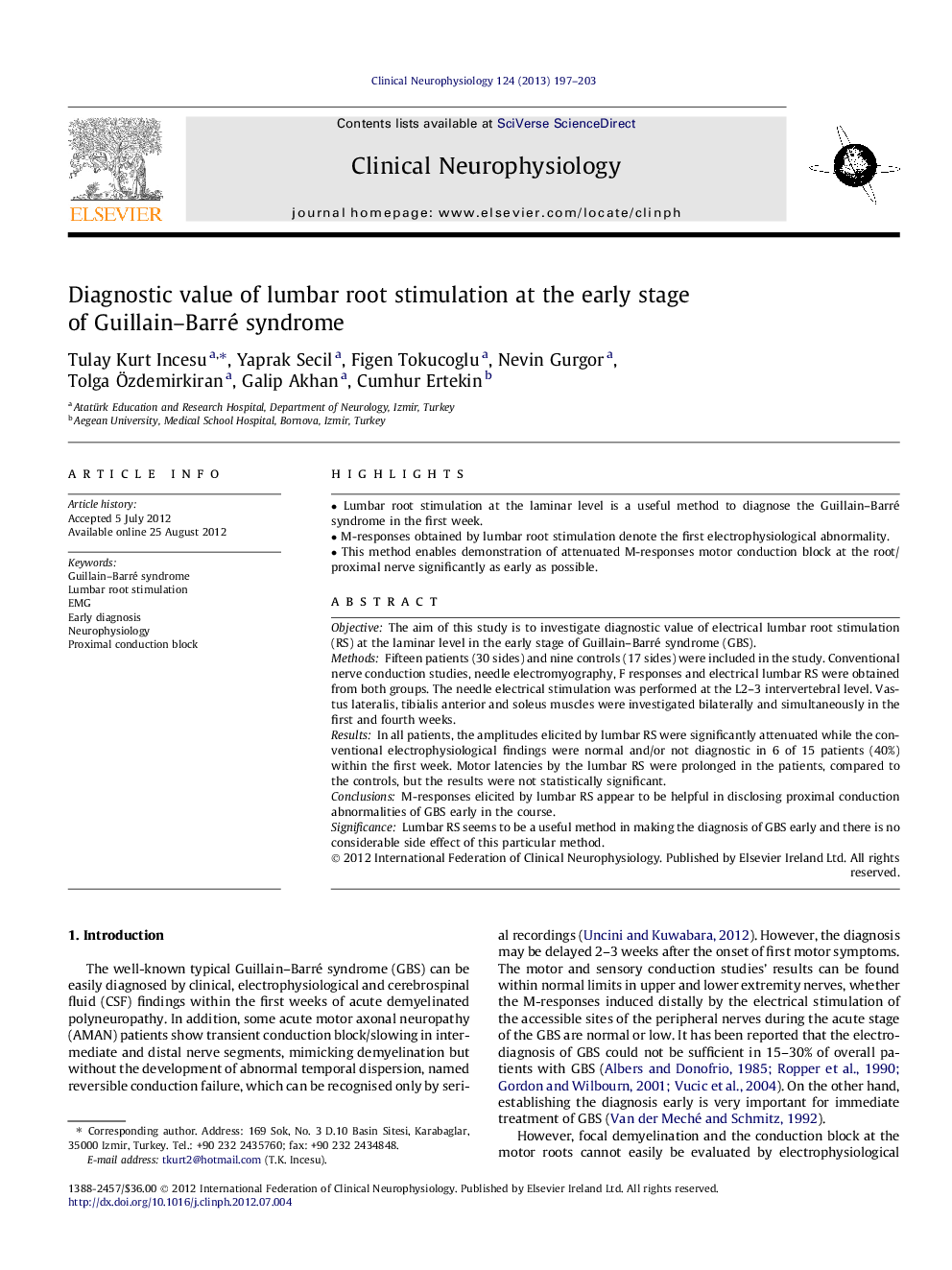| Article ID | Journal | Published Year | Pages | File Type |
|---|---|---|---|---|
| 3043051 | Clinical Neurophysiology | 2013 | 7 Pages |
ObjectiveThe aim of this study is to investigate diagnostic value of electrical lumbar root stimulation (RS) at the laminar level in the early stage of Guillain–Barré syndrome (GBS).MethodsFifteen patients (30 sides) and nine controls (17 sides) were included in the study. Conventional nerve conduction studies, needle electromyography, F responses and electrical lumbar RS were obtained from both groups. The needle electrical stimulation was performed at the L2–3 intervertebral level. Vastus lateralis, tibialis anterior and soleus muscles were investigated bilaterally and simultaneously in the first and fourth weeks.ResultsIn all patients, the amplitudes elicited by lumbar RS were significantly attenuated while the conventional electrophysiological findings were normal and/or not diagnostic in 6 of 15 patients (40%) within the first week. Motor latencies by the lumbar RS were prolonged in the patients, compared to the controls, but the results were not statistically significant.ConclusionsM-responses elicited by lumbar RS appear to be helpful in disclosing proximal conduction abnormalities of GBS early in the course.SignificanceLumbar RS seems to be a useful method in making the diagnosis of GBS early and there is no considerable side effect of this particular method.
► Lumbar root stimulation at the laminar level is a useful method to diagnose the Guillain–Barré syndrome in the first week. ► M-responses obtained by lumbar root stimulation denote the first electrophysiological abnormality. ► This method enables demonstration of attenuated M-responses motor conduction block at the root/proximal nerve significantly as early as possible.
